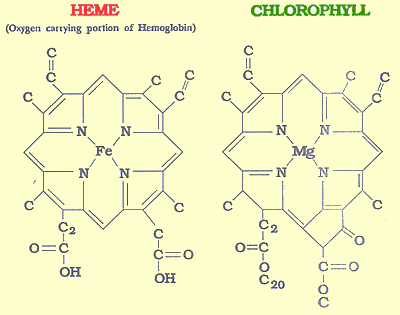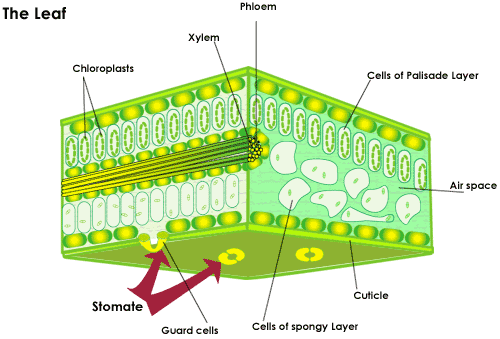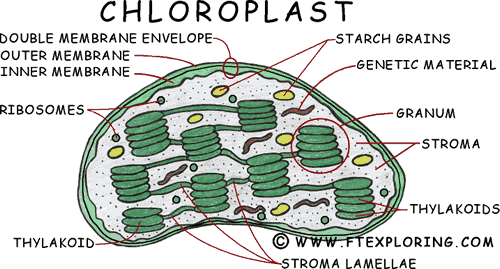Ruth's Basics of Breathing with Trees.
* review cycle of breath with trees in scientific terms (oxygen and co2 exchange). could put this in Climate Change context
* everybody turn to something green. blade of grass, single branch of tree, whole tree or bush, forest itself.
* focus on breath while you breathe. you may bring your consciousness to the in-oxygen out-carbon dioxide exchange cycle or you may just put that in the back of your awareness while you stay present with this green photosynthesizing being.
* do this for 5-7 minutes
* return to circle. share any epiphanies or insights (if little time can first do a sharing in pairs and then a few in circle otherwise can be quite an interesting sharing that follows).
PLUS: I often ask people to first join with a partner and identify a question they are looking for insight or wisdom into. something they need support on or anything that comes to mind. Then when they turn to the tree or whatever they've selected, they can float this question and see if any insight comes to them. Results can be amazing!
During the 'meditation' participants shouldn't worry about whether they are doing it 'right', however it works out for them is fine. just spend the time with the tree. don't worry about thoughts that might come and go. just stay as present as you can with the tree.
You can also discuss our diminished sense of connection and relationship with nature. We have much more developed relationships with other human beings, with technology, with consumerism, addiction and so on. When it comes to spending time with nature and learning about nature, we may find ourselves shutting down, fleeing mentally etc. This exercise is an opportunity to begin to learn a bit more about this and to give a little time to this vital and fundamental relationship which underlies all others.
Breathing with trees meditation – the sympathy of chlorophyll and haemoglobin
Haydn Washington, Oct 2017
We forget the wonder of our daily breathing and how it ties us into the amazing interaction of photosynthesis (creating food from light and CO2) in plants and respiration (breaking down sugars and starches to create energy). We tend to think of ourselves as ‘so different’ from plants – yet we share much in common, as we shall see. The first is two key molecules in the dance of life – chlorophyll and haemoglobin (and haemocyanin in arthropods, molluscs and cephalopods).

The haeme group in haemoglobin binds an atom of iron and this binds oxygen in our lungs and releases it throughout our bodies (haemacyanin is structurally a bit different and uses copper to bind oxygen). In plants, a very similar structure to haeme binds an atom of magnesium, and it is this that allows photosynthesis to take place, where water is split to take the hydrogen ions to combine them to CO2 to make sugars (that can then be stored as starch). The by-product of this is something essential to us –oxygen. Yet I, as a red-blooded human using haemoglobin, and green plants using chlorophyll, we both use a very similar molecule. Even more wondrous, the fundamental processes of animal and plant life take place in cellular ‘organelles’ that were once bacteria (we know this as they still contain bacterial DNA) that through symbiosis became part of our cells, whether we are plants or animals. This was perhaps the single greatest cooperative event in living history, where two different types of life came together to become one, thus allowing the evolution of the plants and animals of today. In plants these key structures are called chloroplasts that produce the sugars and oxygen that power life, in animals they are mitochondria (plants have these also), the powerhouses of our cells, where sugars are broken down to form CO2 and water.
Meditation
Face a plant in the sunlight, focus on your breathing, breathe in, breathe out for a minute or two. Then consider the similarity of our haemoglobin and their chlorophyll. Visualize the structure of your lungs, which contain a series of fine sacs called alveoli. Our blood system brings CO2-rich blood to the lung surface where the CO2 is released into the lung cavity. Consider the plant you face. In a leaf there are pores called stomata that are mostly open but can at times close (e.g. in drought to save water loss). The average number of stomata is about 300 per square mm of leaf surface. The CO2 moves into the air spaces of the spongy layer to the palisade cells below the top surface of the leaf. These are packed with green chloroplasts, which contain structures called ‘grana’ that are like stacks of coins. These grana discs contain the chlorophyll, where light energy is used to split water and use the hydrogen atoms to bind with the CO2 (we breathed out) to make sugars. These can then be made into starch (e.g. potatoes, grains) or turned into cellulose to make wood.


Reach out and hold a leaf. Breathe out – visualize the CO2 that was in your lungs fanning out over the leaf, and passing through its stomates, moving to the palisade cells and then diffusing into the chloroplasts. There in the sunlight, by the magic of photosynthesis, water is split and ‘your’ CO2 is added to the hydrogen atoms from the water to create sugars that power the plant - but also all things that eat the plant (the whole ecosystem). Then visualize the oxygen flowing out from the chloroplasts, out of the stomates into the air – and breathe in. The oxygen produced by chloroplasts in the plants diffuses across our lung membranes to the bloodstream and binds with haemoglobin in our red blood cells. It then travels in our circulatory system to all our cells and is released, diffuses into the mitochondria inside each cell, where the enzymes in the respiration process break down sugars to CO2 and water, producing the ATP molecule that powers our cells.
Open your eyes. Look now at the leaf you hold and all the green plants around you. Through your breathing and the synchronicity of two similar molecules – chlorophyll and haemoglobin - you have just taken place in the dance of life, both giving and receiving. Perhaps plants are not so different as you once thought? Finish your meditation with thanks for our cousins – the green plants that give so much to the living world.
TEMA MILSTEIN'S BREATHING WITH TREES
Inter-Breathing with Trees
Created by Tema Milstein with thanks for excerpting materials from Deep Ecology web site materials (e.g., Joanna Macy, John Seed), and help from Erika Aligno. First time tried was March 23, 2024, for use between Truth Mandala and Council of All Beings, to create space to decompress, ground, and integrate.
INTRO: Activity is about 30 minutes, then we’ll encourage your own mindful grounding afterward before we begin Council of All Beings
- Activity will allow our nervous systems to calm down
- Purpose of this activity is to provide an embodied/sensory refresh and reconnection
- A transition after this morning’s gratitude and pain, and preparation for us seeing with new and ancient eyes (council and cosmic walk)
- If break after this activity, can be barefoot/Earthing in the bush or on the grass, tree hugging, nature appreciation, forest bathing, swim, journaling
ACTIVITY:
- Lie down or sit, feet (barefoot if possible) on Earth
- In this activity, we’re going to breathe together, with ourselves and with the More-than-Human (MTH) world. Of course, we are always doing this. But this activity will allow us to focus on this relationship. It’s a relationship that is constant and fundamental, a never-ending, never-pausing relationship of being alive.
- Start by focusing on a tree/s. Also, can close your eyes. Or go back and forth between the two during the activity.
- Begin with a deep breath in. Feel the fresh oxygen filling you.
- Now breathe out, slowly. Feel yourself filling the air around you with carbon dioxide.
- Now, imagine the breath of the tree in front of you made visible. You see the tree breathing out oxygen and breathing in that carbon dioxide.
- Imagine you can see the deep roots of the tree. They look a lot like the deep roots and branches within your lungs. Notice how you breathe in that tree’s oxygen through the trunk of your neck into your lung roots and branches.
- The capillaries of our blood vessels moving oxygen in and carbon dioxide out and, as the capillaries of the tree’s leaves do the same in reverse.
- Imagine the tree’s roots drawing their breath deep under the soil, deep under the earth.
- Imagine as we draw our breath, drawing deep from within our selves.
- Remember this relationship during our Cosmic Walk tonight when we tell the story of the world before animals, when early photosynthesis polluted the planet with oxygen. Remember this interbreathing when we learn about oxygen loving cells emerging and putting the biosphere back into balance.
- Now, consider each out-breath as a gift given, and each in-breath as a gift received.
Let’s continue breathing this way together, us and the MTH world, while I read words from cultural ecologist/geophilospher David Abram on the concept of interbreathing. These excerpts are from a Q&A I did with Abram, which can be read in the Handbook of Ecocultural Identity in a chapter titled Interbreathing ecocultural identity in the Humilocene:
David: I think perhaps the most interesting, as well as subversive and powerful, move we can make is to identify ever more deeply with our own bodily presence, to open a new solidarity with our animal flesh. No, not just solidarity – (but) to actually identify with this breathing, pulsing creature that we call our body.
… to identify with the body itself, to intuit that this palpable shape – this porous skin, and the blood surging in all these boulevards and byways just beneath that skin, and these nostrils sniffing the air at every moment, and these ears grazing among the sounds of the world – that this is me. That this body is the self, the tangible presence of the self. That the spirit is not housed in the body but that it has this palpable, thingly aspect. The more I identify with this body, the more I discover my entanglement in a more-than-human world. For the body is our sole access to the other animals. This body is what enables my affinity with all these other bodies – bodies not just of other animals, of coyote, and squirrel, and spider, and raven, but also the physical body of trees, and the plants whom we ingest as food, all these rooted but sensitive beings.
I have access to these other bodily presences only by virtue of being a body myself. To identify ever more deeply with my creaturely flesh is a very subversive move indeed, affirming my embedment in a more-than-human community. It is a most powerful way of coming to our senses, beginning to taste the world with one’s tongue, to hear and attune to the speech of other beings.
** As I continue to read from Abram, remember to continue your deep interbreathing, continue to connect with the plantlife around you.
Abram: Even in the middle of the city we are breathing, thank goodness – yet there’d be no oxygen for us to inhale if there weren’t all these green and rooted folks around the city and poking up through the cracks in the sidewalks, plants who are exhaling this oxygenated air that all us animals need for our metabolism. And after breathing it in, we alchemize that oxygenated air within our organism, transforming it, so that what we animals then breathe out is precisely what all the plants breathe in – since that carbon dioxide-infused air is exactly what the plants need for their photosynthetic metabolism. So by the simple act of breathing, we are exchanging air not just with other animals (and the other human animals who surround us there in the city), but we are all inter-breathing with the grasses, and wildflowers and the … trees growing within and around the city.
*** I’m going to share a bit more from my conversation with David. Remember, as I read, continue to focus on your breathing, your mutual dynamic of regenerosity as part of the world. David shared a story about cross-country skiing and coming fast and suddenly into a clearing and nearly on top of a giant moose and her calf. All three froze. Moose are very large and can be extremely dangerous when startled, feeling cornered, and especially when with calf. David then had a quick instinctual reaction.
…I just took a deep breath and I went, <singing> ‘aaaaaaaaaah’ – louder than that though. And, by the time it died out, I noticed the muscles in those forelegs relaxing. So I took another gulp of air and offered another tone <singing deeper> ‘aaaaaaaaaah.’ And, by the time that second tone died out, the moose had gone back to nibbling on the willows, completely relaxed.
So, to Thich Nhat Hanh’s word interbeing I would want also to add another similar term: interbreathing. That, as Thich Nhat Hanh says, we inter-are with one another. But also, in a very palpable, bodily way, we are all of us interbreathing with one another – continuously exchanging breath.
…Talk about reciprocity! It’s so exquisitely palpable, and luscious, really. And yet we, in this modern moment, tend to take the air profoundly for granted – as though it were just empty space. And so we don’t notice this magic: that the atmosphere of this Earth is an elixir born of the interbreathing of our organism with all these other earthly organisms – with the soils, with the oceans, with the fish in those seas. So, in this very visceral, material sense, we are born of one another, materially constituted by our relations with one another.
… there’s this slowly dawning awareness that we inhabit a breathing biosphere – a vast spherical metabolism upon whose flourishing our individual lives all depend. Perhaps this growing recognition of our common flesh can free us … to accept the invitation of gravity and shrink back down into our particular places, attuning to the uniqueness of the local earth wherever we find ourselves, becoming half-decent citizens of the bioregional commonwealth. Perhaps we can relax into our differences, and the divergent rhythms of our particular places, because we’re now awake to the framing-place that holds our individual places within it.
…In the long run, let us hope, there’ll be a rediversification of human culture, even in some sense a re-indigenizing of culture, within a sense of our larger identity as Earth. This breathing planet experiencing itself in and through an outrageous multiplicity of divergent cultures, expressing itself through a thousand and one styles and traditions – each place, each creature, each individual (whether fingered or finned or feathered, whether antlered or leafing or covered in lichen) a unique expression of the manifold weirdness of this whirling world.
That’s Abram in the Handbook of Ecocultural Identity.
In shifting to closing this activity, let’s draw our attention again to our interbreathing. As we breathe in, we can silently say ‘thank you’ to all the flora making this oxygen; as we breathe out, we can reply silently to those gratefully taking in our fauna carbon dioxide, “my pleasure.”
John has written in Thinking like a Mountain about oxygen kissing each cell awake and I imagine carbon dioxide feels the same for plants. He’s written about our bodies being part of much larger symbiosis, living in wider reciprocities. This goes far beyond interbreathing, but we now start with what has become collectively obvious.
As we remember now, we draw gratefully, again and again, from the old, never-ending cycles of partnership and, in turn, generously contribute to these cycles.
We’ll close by inviting us to do 3 sounded exhales together.
The first will be for Earth – mmmmmmm
The second for life – ooooooooh
The third for air – aaaaaaaah


